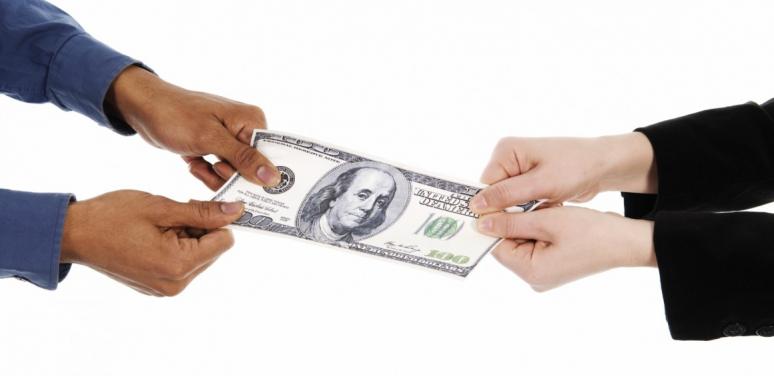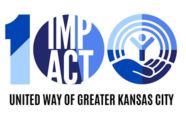Table of Contents
Garnishment: What is It and How Can I Stop It?

Your Rights and Protections in Wage and Non-Wage Garnishments
Here is a brief video about garnishment. Table of Contents
Click on the topic you want to explore. What is garnishment?
Amount of Income That Can Be Garnished
What can I do if I’m being garnished?
Garnishment Frequently Asked Questions
Apply to Kansas Legal Services for Additional Help
How to Protect Your Income and Assets
What is garnishment?
Garnishment is when a debt collector uses the court to take your money away from you. A garnishment can only occur after a Judgement has been obtained in Court. You can confirm that this has occurred with the Clerk of the District Court in the County. You will need the case number, but you can get it off the garnishment order. You will want to see how and when you were notified of the original lawsuit. If you weren’t properly notified (wrong address of the notice, etc.), you might have a defense. However, that is not covered in this article.
There are two types of garnishments: wage garnishment and non-wage garnishment.
The first, wage garnishment, is the process of garnishing a paycheck.
The second, non-wage garnishments, are lump sum garnishments and most often include attachments of money held in a bank account or state income tax refunds.
Wage Garnishment:
If you owe a debt, a creditor can get a judgement against you. They then have the power to take money directly from your paycheck.
A creditor does this by asking a judge to sign an order for a wage garnishment. The order requires your employer to give the creditor a part of your paycheck.
You have a right by law, to be paid a certain amount of your earnings regardless of claims by your creditors. In general, this amount is 75% of your earnings. The amount is calculated after taxes and other deductions required by law are taken out.
If the debt you owe is for child support or support of any other person, the protected amount is less. The amount can range from 35% to 50%.
The amount an employer can withhold for garnishment of credit card bills, medical bills, personal loans, and most other consumer debt is the lesser of the below-listed amounts:
- 25% of your paycheck after the deductions required by law, such as social security and Medicare
- Weekly disposable income amount (the amount you take home from a paycheck after taxes are withheld) minus 30 times the federal minimum wage amount (currently $7.25)
- The whole amount of the garnishment order
|
Examples |
|
|
25% of the paycheck after the deduction of required amounts, such as social security and Medicare |
If you take home $300 weekly, the equation would look like this: $300.00 x 0.25 = $75.00 |
|
Weekly disposable income amount (the amount you take home from a paycheck after taxes are withheld) minus 30 times the federal minimum wage amount (currently $7.25) |
If you take home $300 weekly, the equation would look like this: $300.00 - $217.50 = $82.50 |
|
The whole amount of the garnishment order |
If you take home $300 weekly and the total debt is $100, the amount withheld would be $100. Because the first amount is the lowest amount ($75.00), that is the amount that would be garnished. |
Here is an online calculator that can help you calculate how much will be withheld from your paycheck.
Your paycheck will be garnished until the full amount of the debt is paid. That continues pay period after pay period until released by the creditor. This should occur when the entire debt, including interest, is paid.
Sometimes the original creditor may not do a good job tracking the progress of your payments. So, it's important to keep track of the payments taken from your account. You can keep track in different ways. You can simply write the date and payment down on a piece of paper or use a computer program such as Google Sheets.
Sometimes the original creditor may not do a good job tracking the progress of your payments. So, it's important to keep track of the payments taken from your account. You can keep track in different ways. You can simply write the date and payment down on a piece of paper or use a computer program such as Google Sheets.
You can ask your employer for a breakdown of payments and the remaining balance (an accounting) for the debt. Your employer can then ask for the information from the original creditor. The creditor must give your employer the information within seven days.
If the information is not received within seven days, your employer may write to the creditor to inform them that they will no longer withhold money from your paychecks. If the creditor does not respond within fourteen days, your employer no longer has a duty to garnish your paychecks
Your employer can also withhold a $10 fee per paycheck up to twice in a thirty day period ($20 every thirty days maximum).
Unlike a bank account garnishment, a creditor can only attempt to garnish your paycheck once every thirty days. If the garnishment attempt is unsuccessful, the creditor is required to wait thirty days to refile.
Non-wage Garnishment:
The creditor or debt collector has the power to take your money from your bank if it has a judgment against you.
A garnishment of your bank account happens when a judge signs a court order requiring that your bank give the creditor your money. Your bank must hold 110% of the total amount owed to the creditor. This percentage includes a $15 bank fee for each garnishment order.
The bank has 10 days to inform you how much it’s holding from your bank account. This process occurs even if you share a joint bank account with another individual. They take the money before they give you any notice.
The creditor is allowed to attempt this process two times in a thirty day period.
The garnishment occurs on the money in your bank account at the time the garnishment papers are delivered to the bank.
Access the Google doc FORM Request for Hearing. Or download the fillable form attached below. Please note: the linked Google doc will be updated as needed, so you may prefer it.
Usually the debtor conducts a financial transaction (like writing a check or a debit card swipe) and the check bounces or their card is declined.
The debtor then calls the bank and is told that their account has been garnished and that their money is being held. Sometimes the debtor is told that “the funds are frozen."
The funds will remain in limbo unless and until the debtor asks the court for a hearing to get the funds unfrozen and given back to the debtor.
A debtor has to request a hearing within 14 days -- if not, the creditor gets to keep the funds.
If the debtor fails to ask for a hearing, then the creditor will be allowed to keep the funds.
The debtor’s bank will send the debtor a form document with instructions on how to request a hearing. The form may be confusing, but the debtor needs to fill it out and get it back to the bank within 14 days, no matter what.
If you want to see what the notice that the debtor will be sent,click here. The documents fail to inform the debtor of the illegality of what has happened to the debtor’s paycheck.
Unfortunately, the documents that will be sent to the debtor may be confusing and difficult to follow. If you carefully review the documents, you will see they say nothing about paychecks or wages.
We have a FORM Request for Hearing (attached below) that will make it perfectly clear that your paycheck must be protected. You still must file it within 14 days of the notice of the garnishment.
Use the fillable form (attached) or this link to a Google doc instead of the form the bank sends you : FORM Request for Hearing.
Please note: the linked Google doc will be updated as needed, so you may prefer it.
This form talks directly about the paycheck and requests that it not be illegally garnished.
If a debtor is at risk of losing their paycheck by this type of illegal garnishment they must file the FORM Request for Hearing and prove to the judge that the funds are wages/earnings.
What can I do if I’m being garnished?
Before Garnishment
The best way to avoid garnishment is to pay the debt in full or set up payment arrangements when you are first made aware of the debt.
Creditors will try to collect debt from you several times before they begin the garnishment process. Garnishment is commonly a last resort for creditors and they would much rather work with you on payment arrangements.
You should contact the creditor after receiving notice of a debt. Do not ignore notices from creditors as ignoring them will possibly lead to garnishment.
Creditors must wait fourteen days after receiving a judgment before they can request a garnishment order. Within these fourteen days, you should contact the creditor to try to pay the account in full or possibly set up payment arrangements.
If you pay the amount in full or the creditor agrees to regular payments, you can avoid being garnished.
During Garnishment
Dispute/Exemptions:
Once you have received notice that you are being garnished, you have fourteen days to file a dispute if the notice has incorrect information or you believe you don’t owe the debt. There will also be a list of exemptions on the notice of garnishment that cannot be taken to repay your debt.
Examples of exemptions which apply to money in a bank account include social security, disability, retirement benefits, and supplemental security income (SSI) such as unemployment and workers compensation. Unemployment compensation is only exempt if you do not combine it with other funds. For example, if you put your unemployment compensation in a bank account that has money from any other source, then it is no longer exempt from garnishment.
Earnings are compensation for personal services, whether called wages, salary, commission, bonus or otherwise. A creditor cannot garnish wages from your paycheck and then garnish wages from your bank account. You will need to provide proof that money in your bank account came directly from your wages.
You must make a request to go to court when disputing or claiming an exemption.
The form to request a hearing for a dispute or exemption claim can be found here.
Illness Exemption:
If you are prevented from working for more than two weeks due to a personal illness or the illness of a family member, all garnishments must stop until two months after recovery from the illness.
Bankruptcy:
The last resort to stop a garnishment is filing for bankruptcy. Filing for bankruptcy stops all garnishment, but has serious consequences. You should speak with an attorney before making the decision to file for bankruptcy.
You can also visit our bankruptcy page for more information.
Judgement Proof Debtor:
A person who has only Social Security (an exempt form of payment) in their bank account might be called Judgment Proof. However, you should be careful not to put money from other sources in that account. Don’t put money from gifts, a garage sale or cash checks for friends in the account. These ruin the status of the account as holding only exempt money.
Employment Rights:
If you have a wage garnishment, your employer may NOT fire you and potential employers may NOT refuse to hire you because of the garnishment.
It is also important to keep an open communication with your employer. Have conversations where you simply inform them of what’s happening and that you are working to take care of it. Avoid anger at your employer, as they can do nothing to stop it. In fact, if they don’t take the required court action, the creditor can get judgment against your employer and collect your debt from the employer.
Garnishment Frequently Asked Questions
Where does my money go when it's garnished?
All money collected, except for the fees withheld by an employer or bank, is sent to the original creditor or debt collector.
Can I hide or withdraw money from my bank account to avoid garnishment?
If you’ve been notified of a garnishment, you cannot legally hide or transfer your assets to avoid garnishment, including emptying your bank account.
Can a creditor garnish my paycheck 25% and then garnish my bank account after the other 75% of my paycheck is deposited?
No. A creditor cannot garnish 100% of your earnings or wages. The Kansas Supreme Court recently held that a creditor could not use a non-wage garnishment of your bank account to take earnings or wages. The burden will be on you to prove that the funds in your bank account come directly from your wages.
Where can I dispute a garnishment or request a hearing?
The dispute form you would need to complete to request a hearing is attached to this page below, Instructions and Notice to Judgment Debtor, in a Word document you can download and complete.
Once completed, you must take it to the District Court clerk and a hearing will be scheduled between 7 and 14 days after the request is submitted. You will then go to the courthouse to prove that the debt was either in error, missing information, or that your money is exempt from garnishment.
Note: These answers are written to provide general legal information, not legal advice. Your situation may be different or involve one of the exceptions in this area of the law. These resources are not designed for complex or complicated legal issues. In those situation, hiring a lawyer will be your best option.
Additional Information
If you would like more information about protecting your income and assets, please click here.
Apply to Kansas Legal Services for Additional Help
If you need help with garnishment or collection issues, please fill out our online application.
Short video about Garnishment
Here's a video of the KLS webinar on garnishment
Derek Leiblie, Washburn Law and Access to Justice Technology Fellow at Kansas Legal Services, presented this information on July 22, 2021.
How to Protect Your Income and Assets
This brochure will give you some great ideas about how to protect your money.



